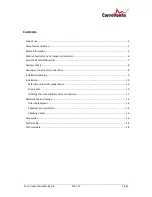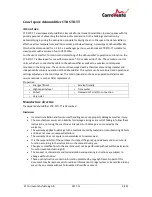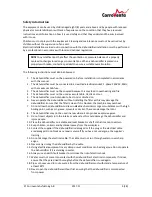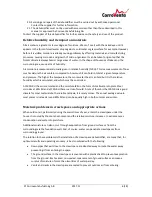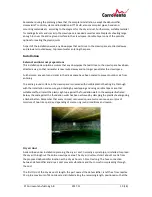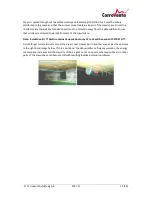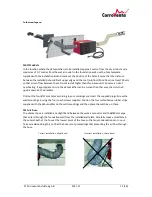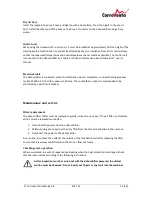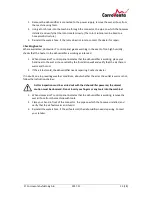
© Corroventa Avfuktning AB
2017.11
7 (18)
How the dehumidifier works
The average temperature in a crawl space is low, something which makes the adsorption
principle used in the CTR STD-TT superb compared to dehumidifiers whose efficiency falls
significantly when the temperature falls. The adsorption principle thus provides effective
dehumidification at temperatures well below freezing.
The fixed desiccant that is used in CTR STD-TT is silica gel, which can be regenerated an
almost unlimited number of times. Silica gel is a crystal with many small microscopic pores
giving the crystal's walls a massive surface area. A gram of this substance has a moisture
absorption areas of 500 - 700m
2
, which means that the desiccant in a CTR STD-TT has a
total drying area of approx. 43,000 m
2
. Silica gel can absorb a lot of moisture, up to 40% of
its own weight. It is not water soluble and therefore cannot be washed away or blown out
with exiting airflows.
The dehumidification process
The desiccant is placed in a rotor (1). The air to be dried is sucked in through the inlet (2) by
means of a process air fan (3).
The air passes a filter and then the drying rotor, after which the dehumidified air goes
through the dry air outlet (4) to the area to be kept dry. The rotor has axially directed air
ducts and consists of a highly active desiccant, silica gel, bonded in a ceramic structure. The
axially directed air ducts in the rotor give laminar flow with minimal pressure drop.
The rotor rotates by means of a drive motor (5) and a drive belt (6). The moisture that
is adsorbed in the rotor is driven out by a small portion of the process air being heated by
the heater (7) and then passing a smaller part of the rotor, which is thus regenerated and
also cleaned by the countercurrent principle.
The wet air is removed via the outlet (8) to the surroundings.


